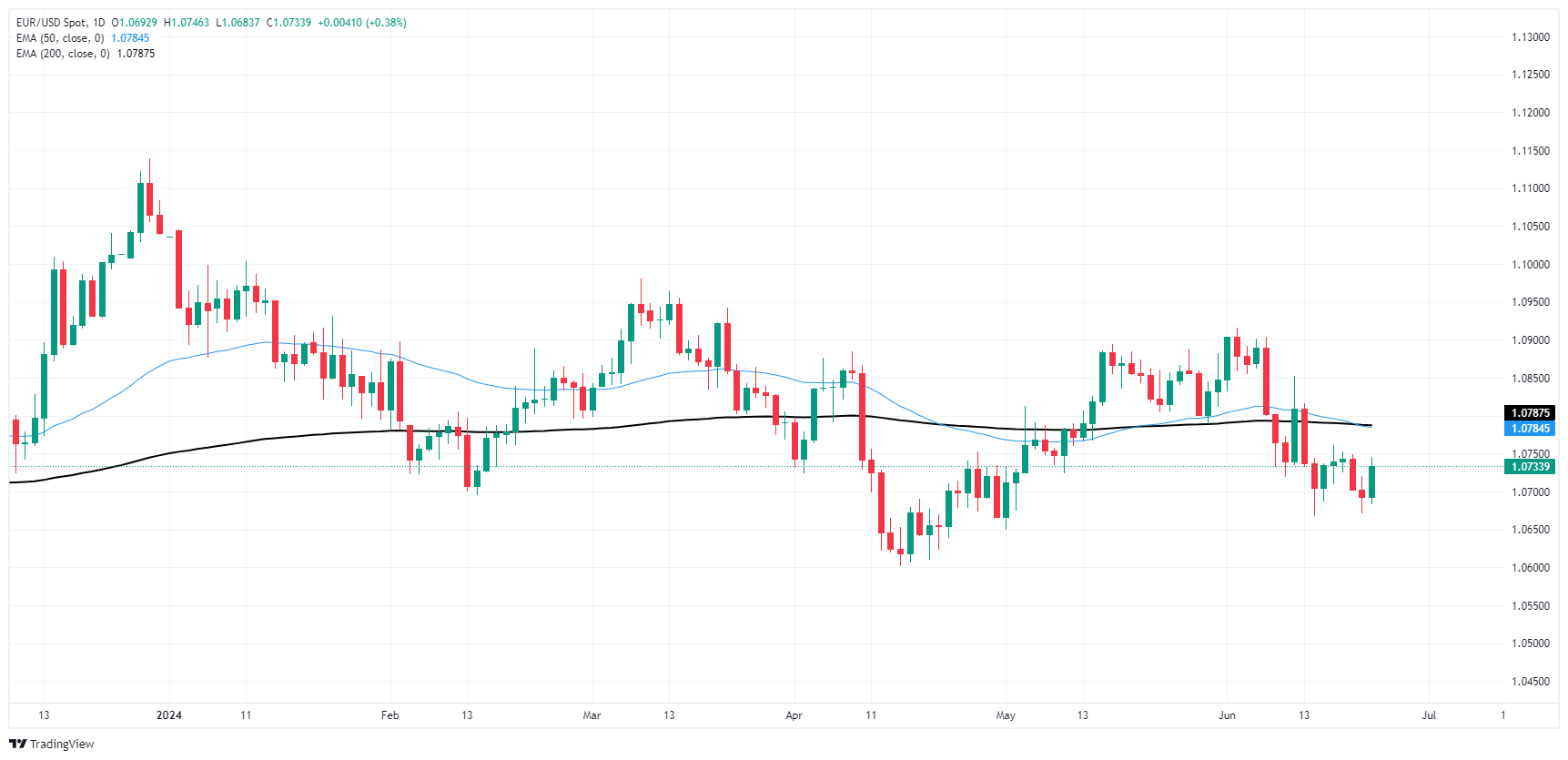- EUR/USD recovered from the maximum future problem but remained stuck at 1.0730.
- Euro investors ignored German information as USD inflows slowed.
- Tuesday was limited to mid-level releases and speeches by a handful of central planners.
EUR/USD recovered from Friday’s steep decline to reach 1.0670. The untapped trading future is posing problems, with appetite prospects pinned firmly to the upside, sending the US dollar falling and the euro strengthening as investors headed for a bit of calm on Tuesday.
Fed’s Daily: Inflation not the only option, although latest inflation readings are extra encouraging
As major financial information releases begin to trickle into the future, retirement investors focus on statements from policymakers that dot the soil until key information releases begin in the back half of the trading future. An update on US gross domestic product (GDP) data is scheduled for Thursday, with German retail sales to be met on Friday and an unedited update for US private expenditure expenditure (PCE) price index inflation.
Fed’s Goolsby: Slow inflation information will open door to more relaxed coverage
Tuesday’s financial calendar is particularly taboo, which is expected to catch the eye of Joachim Nagel, head of the German Central Vault. During Tuesday’s US market session, Federal Reserve (Fed) officials are expected to deliver several speeches, and the central planner is likely to be in the middle of Fedspeak, in echoes of Monday’s performance.
German sentiment surveys broadly missed expectations early on Monday, although euro markets are showing a lack of EU data to lift the broader market as food is likely to ease further from the Federal Reserve Market Committee (FOMC). The low is based on expectations of a quarter point decline. ) 18 Sep Price Name. Consistent with CME’s FedWatch device, value investors are pricing in about 70% odds of a 25 basis level rate cut from the Fed in September.
EUR/USD Technical Outlook
EUR/USD again extended Friday’s lows to 1.0670, however the bullish momentum hit a snag, with upcoming intraday bids hanging above the 200-hour exponential moving average (EMA) at 1.0737. EUR/USD still remains lower on daily candles, with price momentum trading on the bearish side of the 200-day EMA at 1.0815.
EUR/USD hourly chart
EUR/USD Daily Chart
Euro FAQ
The euro is the foreign currency for the 20 European Union countries belonging to the eurozone. It is the second most traded foreign currency in the world after the USA greenback. In 2022, it accounted for 31% of all foreign exchange transactions, accounting for an average of more than $2.2 trillion per day. EUR/USD is the most traded currency pair in the world, with an estimated 30% discount on all transactions, followed by EUR/JPY (4%), EUR/GBP (3%) and EUR/AUD (2%). Comes in place of. ,
The ECU Central Store (ECB) in Frankfurt, Germany, is the accumulation vault for the Eurozone. The ECB sets interest rates and manages financial coverage. The main objective of the ECB is to maintain price balance, which means either controlling inflation or encouraging expansion. Its number one software is to increase or decrease interest rates. The highest rates of interest – or the anticipation of overhead fees – will in most cases yield an advantage to the euro and vice versa. The ECB Governing Council takes financial policy decisions in meetings held up to 8 times a day. Decisions are made by the six permanent members, including the heads of eurozone national banks and ECB President Christine Lagarde.
Stable Eurozone inflation information through the Harmonized Index of Consumer Costs (HICP) is a notable econometric measure for the euro. If inflation rises more than anticipated, especially if above the ECB’s 2% target, it forces the ECB to raise interest rates to get it back under control. Quite high rates of interest compared to the numbers on the contrary will in most cases benefit the Euro, as it makes the patch extra attractive as a playground for international buyers to landscape their cash.
The information release reveals the state of the financial system and will have an impact on the euro. Indicators such as GDP, production and product and services PMIs, ACT and consumer sentiment surveys can all influence the course of a currency. A strong financial system is a perfect fit for the euro. This not only attracts more international investment but it will also prompt the ECB to raise interest rates, which will directly support the euro. Put another way, if financial information is sensitive, the euro is likely to fall. Financial data are particularly important for the Eurozone’s four largest economies (Germany, France, Italy and Spain), as they account for 75% of the eurozone economy.
Some other important information downside for the Euro is industry stability. This indicator measures the excess between what a country earns from its exports and what it spends on imports during a given period. If a country produces upcoming exports that are in high demand, the value of its foreign exchange will be derived entirely from the residual demand produced from international consumers buying those goods. Therefore, a favorable web industry balance strengthens the foreign exchange and an unfavorable balance does the opposite.
Discover more from news2source
Subscribe to get the latest posts sent to your email.




